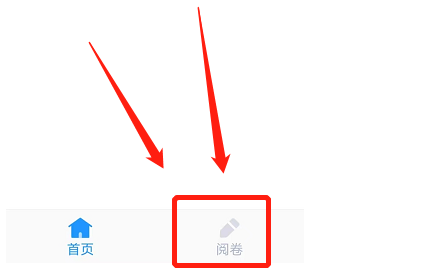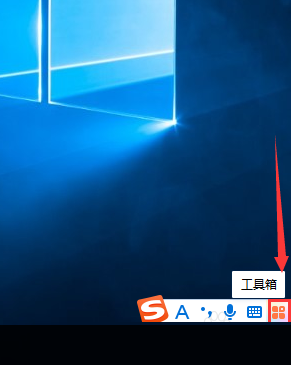本教程操作环境:windows7系统、ECMAScript 6版、Dell G3电脑。
一、arguments用法
1. 说明
es6中箭头函数是不识别arguments的。所以用rest来取代arguments。
 【资料图】
【资料图】
ES6之后,都用剩余参数代替arguments了,剩余参数直接就固定到数组里了,而arguments是类数组(本质是个对象),还需要转换。
2. arguments的常用操作
(1). 获取参数长度
(2). 根据索引获取参数
(3). 获取当前arguments所在的函数
代码分享:
{ console.log("----------------1. arguments常用操作-------------------"); function Test1() { // arguments长什么样?---本质是一个对象 // { // "0": 1, // "1": 2, // "2": 3, // "3": 4, // "4": 5, // "5": 6, // "6": 7, // "7": 8 // } console.log(arguments); // 常见的对arguments的操作是三个 // 1.获取参数的长度 console.log(arguments.length); // 2.根据索引值获取某一个参数 console.log(arguments[0]); console.log(arguments[1]); console.log(arguments[2]); // 3.callee获取当前arguments所在的函数 console.log(arguments.callee); } //调用 Test1(1, 2, 3, 4, 5, 6, 7, 8);}登录后复制3. 将arguments转换成数组
{ console.log("----------------2. 将arguments转换成数组-------------------"); function Test2() { // 方案1-自己遍历 { let newArray = []; for (let i = 0; i < arguments.length; i++) { newArray.push(arguments[i]); } console.log(newArray); } // 方案2-Array.prototype.slice将arguments转成array { let newArray2 = Array.prototype.slice.call(arguments); console.log(newArray2); } // 方案3-ES6语法 Array.From { console.log(Array.from(arguments)); } // 方案4-ES6语法 剩余参数 { console.log([...arguments]); } } //调用 Test2(1, 2, 3, 4, 5, 6, 7, 8);}登录后复制4. 箭头函数中没有arguments
{ console.log("----------------3. 箭头函数中没有arguments-------------------"); let Test3 = () => { console.log(arguments); }; Test3(1, 2, 3, 4);}登录后复制二. ES6剩余参数和展开运算符
1. 剩余参数(Rest Parameter)
剩余参数语法允许我们将一个不定数量的参数表示为一个数组,不定参数定义方式,这种方式很方便的去声明不知道参数情况下的一个函数。
代码分享
{ console.log("-----------------1. 剩余参数---------------------"); function sum1(...nums) { console.log(nums); console.log( nums.reduce((preValue, currentValue) => preValue + currentValue, 0) ); //求和 } //调用 sum1(1, 2); //[1,2] sum1(1, 2, 3); //[1,2,3] sum1(1, 2, 3, 4); //[1,2,3,4] function sum2(num1, num2, ...nums) { console.log(nums); console.log( nums.reduce( (preValue, currentValue) => preValue + currentValue, num1 + num2 ) ); //求和 } //调用 sum2(1, 2); //[] sum2(1, 2, 3); //[3] sum2(1, 2, 3, 4); //[3,4]}登录后复制2. 展开运算符(Spread Operator)
把固定的数组内容“打散”到对应的参数。
代码分享:
{ console.log("-----------------2. 展开运算符---------------------"); function sum1(num1, num2) { console.log(num1 + num2); } // 调用 let arry1 = [10, 20]; sum1(...arry1); function sum2(num1, num2, num3) { console.log(num1 + num2 + num3); } //调用 let arry2 = [10, 20, 30]; sum2(...arry2);}登录后复制总结:
1. Spread Operator 和 Rest Parameter 是形似但相反意义的操作符,简单的来说 Rest Parameter 是把不定的参数“收敛”到数组,而 Spread Operator 是把固定的数组内容“打散”到对应的参数。
2. Rest Parameter 用来解决函数参数不确定的场景,Spread Operator 用来解决已知参数集合应用到固定参数的函数上
三. apply/call/bind用法总结
1. apply 和 call都是为了改变被调用函数中this的指向, 同时立即执行该函数
2. bind也是为了改变函数中this的指向,但它返回的是一个函数,需要被调用才能执行
3. apply 和 call的第一个参数都是传入绑定到对象,用于改变this指向,但是
(1). apply是将需要传入函数的参数放到一个数组里,传入到第二个参数的位置
(2). call是从第2,3,4.....位置依次传入需要的参数
4. bind 后续传入参数的形式和call相同,从第2,3,4.....位置依次传入需要的参数,bind返回的是一个函数,需要再次调用。
代码分享:
// 案例1--隐式绑定{ console.log("----------------案例1--------------------"); let name = "ypf1"; let age = 18; let obj = { name: "ypf2", myAge: this.age, getMsg: function () { console.log(this.name, this.age); }, }; // 调用 console.log(obj.myAge); //undefined (隐式绑定,this指向obj) obj.getMsg(); //ypf2,undefined (隐式绑定,this指向obj)}//案例2--只绑定,不传参/* 注意1个细节,bind后面多了个(),bind返回的是一个新函数,必须调用才能执行*/{ console.log("----------------案例2--------------------"); let name = "ypf1"; let age = 18; let obj = { name: "ypf2", myAge: this.age, getMsg: function () { console.log(this.name, this.age); }, }; let obj2 = { name: "ypf3", age: 35 }; // 调用 obj.getMsg.apply(obj2); //ypf 35 (apply显式绑定优先级高于隐式绑定,this指向obj2) obj.getMsg.call(obj2); //ypf 35 (call显式绑定优先级高于隐式绑定,this指向obj2) obj.getMsg.bind(obj2)(); //ypf 35 (bind显式绑定优先级高于隐式绑定,this指向obj2)}// 案例3--传递参数/* apply传递数组 call和bind都是依次写参数 特别注意:bind可以多次传递参数*/{ console.log("----------------案例3--------------------"); let name = "ypf1"; let age = 18; let obj = { name: "ypf2", myAge: this.age, getMsg: function (msg1, msg2) { console.log(this.name, this.age, msg1, msg2); }, }; let obj2 = { name: "ypf3", age: 35 }; //调用 obj.getMsg.apply(obj2, ["消息1", "消息2"]); obj.getMsg.call(obj2, "消息1", "消息2"); //bind用法1 obj.getMsg.bind(obj2, "消息1", "消息2")(); //bind用法2--多次传参 let fn1 = obj.getMsg.bind(obj2, "消息1"); fn1("消息2");}登录后复制四. apply/call/bind用js实现
1. apply
(1). xxFn.ypfapply(), 在ypfapply中,this指向xxFn函数
(2). 需要实现出入 null 或 undefined的时候,this指向window
(3). 使用 delete 可以删除对象的某个属性
(4). 通过Function.prototype原型添加
(5). || 用法
argArray = argArray?argArray:[] 等价于
argArray = argArray || []
代码分享:
/** * 利用js手写call函数 * @param {Object|null|undefined} thisArg 待绑定的对象 * @param {Array} argArray 调用函数的数组参数 */Function.prototype.ypfapply = function (thisArg, argArray) { // 1. this指向调用函数 let fn = this; // 2. 获取传递参数 thisArg = thisArg != null && thisArg != undefined ? Object(thisArg) : window; //3. 赋值函数并调用 thisArg.fn1 = fn; argArray = argArray || []; let result = thisArg.fn1(...argArray); //4. 删除thisArg绑定的属性 delete thisArg.fn1; //5.返回结果 return result;};// 测试function test1() { console.log(this);}function sum(num1, num2) { console.log(this, num1, num2); return num1 + num2;}// 1. 利用系统自带的apply测试console.log("----------1.利用系统自带的call测试---------------");test1.apply(null);let result1 = sum.apply("ypf1", [10, 20]);console.log(result1);// 2. 利用自己写的测试console.log("----------2.利用自己写的测试---------------");test1.ypfapply(null);let result2 = sum.ypfapply("ypf1", [10, 20]);console.log(result2);登录后复制2. call
(1). xxFn.ypfcall(), 在ypfcall中,this指向xxFn函数
(2). 需要实现出入 null 或 undefined的时候,this指向window
(3). 使用 delete 可以删除对象的某个属性
(4). 通过Function.prototype原型添加
代码分享:
/** * 利用js手写call函数 * @param {Object|null|undefined} thisArg 待绑定的对象 * @param {...any} args 调用函数的参数 */Function.prototype.ypfcall = function (thisArg, ...args) { // 1. 指向待调用的函数 let fn = this; //2. 获取绑定对象 thisArg = thisArg != null && thisArg != undefined ? Object(thisArg) : window; //3.调用函数 thisArg.fn1 = fn; let result = thisArg.fn1(...args); //4. 删除多余的属性 delete thisArg.fn1; //5. 最终返回 return result;};// 测试function test1() { console.log(this);}function sum(num1, num2) { console.log(this, num1, num2); return num1 + num2;}// 1. 利用系统自带的call测试console.log("----------1.利用系统自带的call测试---------------");test1.call(undefined);let result1 = sum.call("ypf1", 10, 20);console.log(result1);// 2. 利用自己写的测试console.log("----------2.利用自己写的测试---------------");test1.ypfcall(undefined);let result2 = sum.ypfcall("ypf1", 10, 20);console.log(result2);登录后复制3. bind
(1). bind和call相同,接收到参数是依次传递,另外bind返回的是函数!!
(2). xxFn.ypfbind(), 在ypfbind中,this指向xxFn函数
(3). 需要实现出入 null 或 undefined的时候,this指向window
(4). 使用 delete 可以删除对象的某个属性
(5). 由于bind返回的是函数,所以需要声明1个函数, 并返回这个函数
函数内部核心点:由于bind可以一次性传递参数,也可以多次传递参数,所以需要对两个参数进行一下合并
代码分享:
Function.prototype.ypfbind = function (thisArg, ...argArray) { // 1. this指向调用的函数 let fn = this; // 2. 处理绑定参数 thisArg = thisArg != null && thisArg != undefined ? Object(thisArg) : window; // 3. 声明一个函数 function DyFun(...argArray2) { // 绑定函数 thisArg.fn1 = fn; // 合并参数 let finalArgArray = [...argArray, ...argArray2]; // 调用函数 let result = thisArg.fn1(...finalArgArray); // 删除用完的属性 delete thisArg.fn1; // 返回结果 return result; } //4. 返回一个函数 return DyFun;};// 测试function test1() { console.log(this);}function sum(num1, num2) { console.log(this, num1, num2); return num1 + num2;}// 1. 利用系统自带的bind测试console.log("----------1. 利用系统自带的bind测试---------------");test1.bind(undefined)();let result1 = sum.bind("ypf1", 10, 20);console.log(result1());let result2 = sum.bind("ypf2", 10);console.log(result2(30));// 2. 利用自己写的测试console.log("----------2.利用自己写的测试---------------");test1.bind(undefined)();let result3 = sum.bind("ypf1", 10, 20);console.log(result3());let result4 = sum.bind("ypf2", 10);console.log(result4(30));登录后复制【相关推荐:javascript视频教程、编程视频】
以上就是es6有没有arguments的详细内容,更多请关注php中文网其它相关文章!










































































